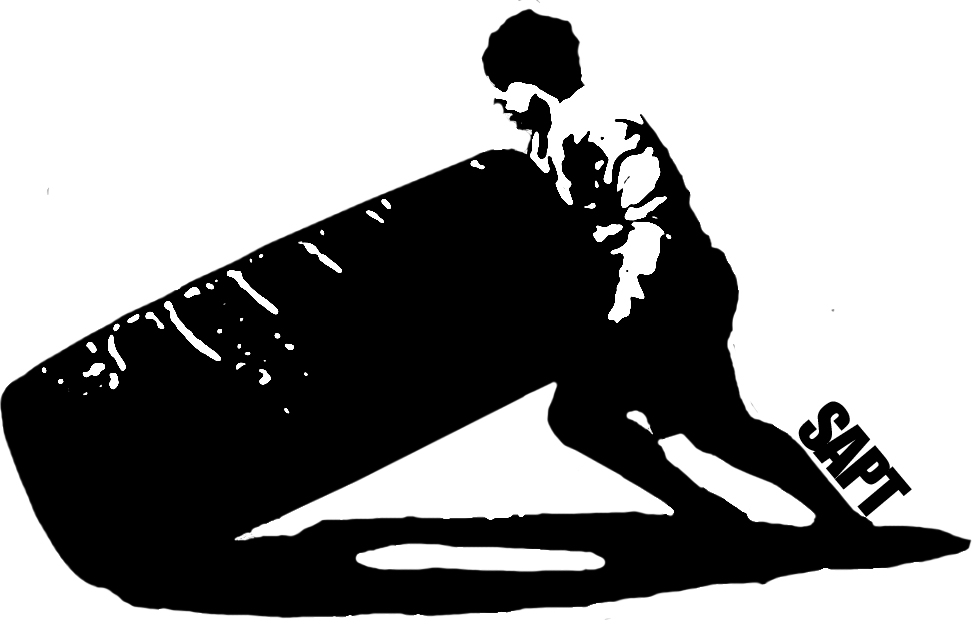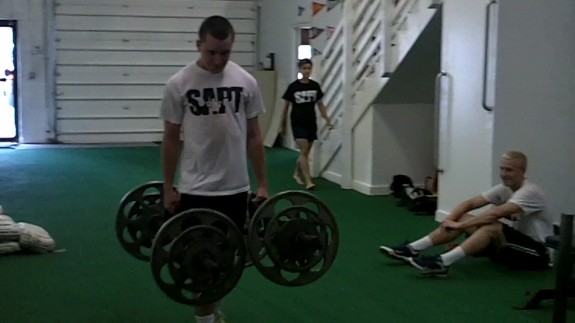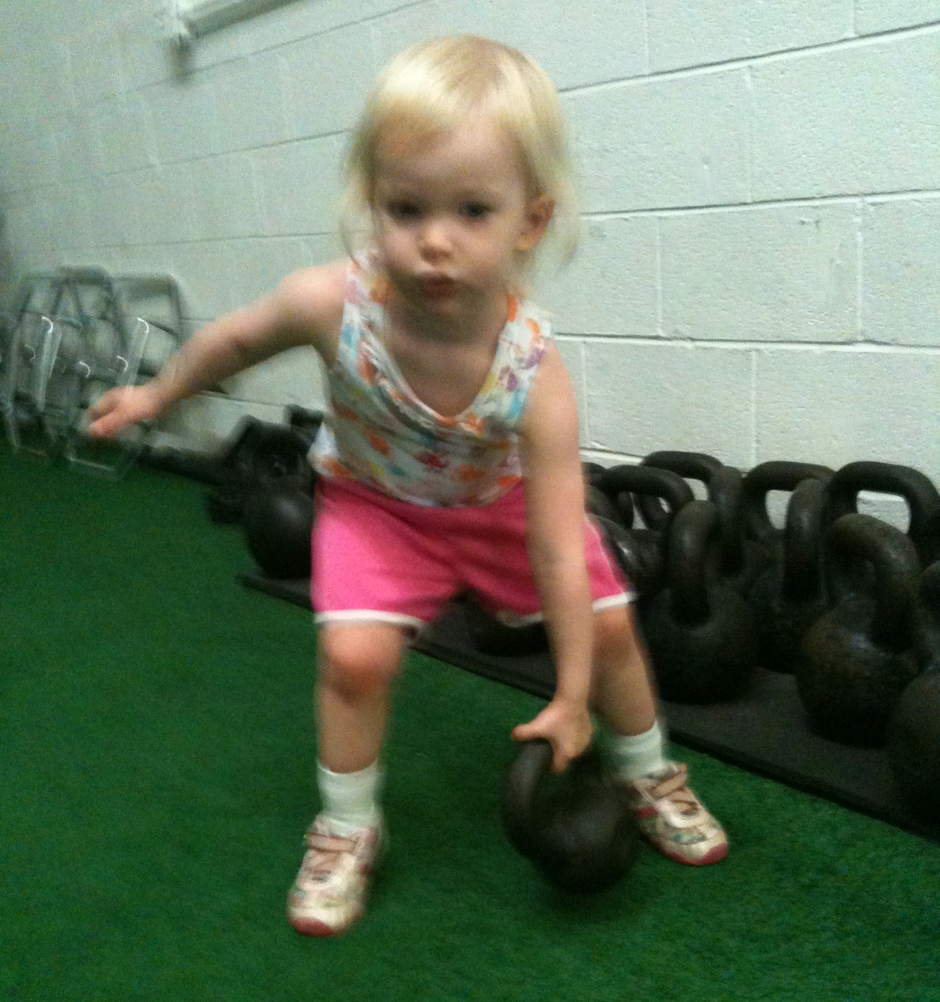Stuff You Should Read 8/31/12: Things I've Learned, The Difference Between Coaching Men vs. Women, and Sport Training for Jumpers and Sprinters
Before I get to the list, I have to show you the greatest thing I stumbled across this past month, thanks to Ryan:
If Bane says you should understand good squatting mechanics, then you should probably understand sound squatting mechanics. Case closed.
Alright, moving on to the list:
10 Things I've Learned: Ramblings From a Mathematically Challenged Fitness Coach - Alwyn Cosgrove
This article holds a special place in my heart as it was the FIRST article I ever read that helped bring me away from the stupid with regards to training people.
At the time of stumbling across the article, I was working as a personal trainer down at Virginia Tech. While yes, I was at least preaching the importance of squatting, progressive overload, and good technique, I was still following a very "Muscle & Fitness" approach to training: You know, attacking all the angles of each muscle group, omitting warm-ups, performing at least 40 total work sets during a session, tons of machine and leg press work, along with other equally useful things such as placing screen doors on submarines.
And no, I had no clue what a foam roller was, and yes, #26 and #28 on the list gave me a particularly well-deserved kick to the pants.
Upon reading this article, I immediately thought to myself, "What the....!!! Where have I been for the past couple years; hiding under a rock? What have I been wasting my time with reading?"
For those of you who haven't read it, I highly encourage you to click the link above.
Coaching Women and Coaching Men: Two Different Planets - Kelsey Reed
If you work in the coaching or training sector, in the weightroom or out on the field, it (hopefully) undoubtedly didn't take long for you to realize that teaching a male a skill versus teaching a female a skill can require particularly different approaches.
I thought Kelsey did an excellent job elucidating a few of the not-so-obvious differences between coaching men vs. women, with a few tips to boot.
Progression and Periodization for Elite Sprinters and Jumpers - Sarah Walls
This is an old(er) post from Sarah that I thought provided some awesome insight into training jumpers and sprinters. Considering that she is the strength & conditioning coach for the George Mason team (a consistently top team in America), this is written from someone who actually "walks the walk" of working with high level track athletes.
For those of you who enjoy a bit more of the "geeky" side of training, this will be right up your alley, as well.
SAPT College Baseball Training Testimonials: Red Dowdell, Ryan Dickt, & Kent Blackstone
A number of our athletes are headed off to compete in collegiate sports this year, and three of our baseball guys were kind enough to take a couple moments in order to provide some insight into how training at SAPT has helped them to prepare for the high level of competition they'll be facing this upcoming season. I should also note that what they didn't say on camera is that they are some of the hardest working athletes I know, giving it their 100% each and every single time they walked in the door. A good training program is nothing without the athlete following it through no matter what "life" throws at them outside the gym walls, so I tip my hat to these guys for consistently training with conviction and purpose, and setting a shining example to everyone who's fortunate enough to work alongside them.
Take it away fellas!
Red Dowdell - Virginia Military Institute
Position: Catcher High School (Senior) Honors: First-Team All-Met 2012, National District Player of the Year 2012
(Note: Below is Red hitting a big deadlift PR at the end of in-season training this past Spring)
Ryan Dickt - Patrick Henry Junior College
Position: Catcher High School (Senior) Honors: National District Player of the Year 2012, 2nd Team All-Region
(Note: Below is Ryan performing a ground-to-standing transitional movement drill in preparation for the upcoming baseball season.)
Kent Blackstone - New Mexico State University
Position: Shortstop High School (Senior) Honors: First-Team All Met 2012
Best of luck to all you gentlemen this next year!
Read This! Training Tips from a Toddler
A huge portion of my job boils down to this: teaching adolescents and adults alike how to move with the same precision and excitement that comes inborn for all of us, but that most of us lose over time. Forget about performance or a one-repetition squat maximum… I’m talking about re-teaching the basics of pushing and pulling. It sounds totally cliché, but watching my 2-year old daughter’s development across all platforms is truly a joy for me. I could, of course, talk endlessly about her cognitive development, but I’ll try to exhibit some self-control and keep this limited to the lessons we would all be well served to apply to ourselves in our physical training:
1. Focus: Last week Ryan and I picked up the kids from daycare and were walking home. As we crossed our neighborhood pool’s parking lot, Arabella suddenly shouted “FAST!” and took off running! I laughed to myself and thought how wonderful and meaningful that short exclamation was.
She wanted to run fast, got into the proper mindset, and sprinted. How simple this is! And yet, so often I have to coach athletes in the “how” of getting themselves into this same focused mindset.
2. Go through a full range of motion: Toddlers are notorious for having impeccable squatting form. Part of this is because they’re all built like power lifters (short legs, long torso, and the classic belly), but even after we lose that physique, full-ROM should be the RULE, not the EXCEPTION. You’ll be strong, stable, and have some pretty excellent mobility all around.
3. Pick-up heavy stuff: Arabella walked up to SAPT’s line of kettlebells on Sunday, grabbed a 10-pounder and carried it a few steps. It was definitely heavy for her, but she moved it a few feet and was satisfied.
4. Be athletic: Run, jump, kick, throw. Doing these things every once in a while is fun and inherently human.
5. Show enthusiasm for what you’re doing: Adults who pine all day about going to the gym at night are setting themselves up for failure. Accept that humans are meant to be active and strong. Once you do, maybe you’ll start looking forward to doing something other than being witness to your body wasting away.
The next time I squat, I’m considering yelling out “STRONG!” before the set – I may get a few looks, but I guarantee it would do me some good.
Parental Control
I am fortunate to work with a number of adolescent athletes ranging in age from 10-18. While the adolescent is always my primary client, the parents are often just as important. Parents often struggle with how to help their child maximize their potential, while still maintaining their number one priority, which is to be a parent. I often pass along this article written about Doc Rivers (Boston Celtics Head Coach) and how he has stayed away from coaching his son, Austin (10th pick of the 2012 NBA draft). In the article Coach Rivers said, “I’ve been great. I stay out of it, I give him advice about humility. Other than that ... go play basketball. The coaches will coach you and I’ll be your parent.” If one of the greatest coaches in the NBA can learn how to separate his role as a parent and his role as a coach, then every doctor, lawyer, and businessman/woman should strive to do the same with their children.
Every client I have ever worked with has had parents who show these three characteristics:
- Support: I have never worked with an adolescent client who doesn’t have parental support. The reason my phone rings from a parent is almost always a result of the parent’s desire to support their child. While the motives often vary, the common thread is always support.
- Challenge: Good parents almost always challenge their children to be better. A parent’s job is to teach their child morals, hard work, and to ensure that they don’t settle for anything but their best.
- Embarrass: No matter the age or environment, parents will always embarrass their children in one-way or another. It exists in every parent-child relationship and there’s no way around it. Embarrassment, intentional or not, is a part of being a parent.
With these three characteristics spelled out as “standards” amongst parents, it’s important to figure out which of them a parent should direct most of their attention to.
Support is one of the greatest gifts a parent can give a child, and that’s exactly what parents need to focus on when interacting with their adolescent athlete. Taking a supportive role and letting the coaches be in charge of challenging the child, will allow the child to enjoy their sport, learn from their sport, and give them the best opportunity to be successful. Coaches inherently are supposed to challenge, so as Doc said, “the coaches will coach, and I’ll be your parent.” So parents should make sure to support, coaches should make sure to challenge, and children will let the parent know they are embarrassing them. Trust me, I told my parents last night.
Are Your Getting the Most Out of Your Squat?
I recently bought the 3rd edition of Starting Strength by Mark Rippetoe. As I read through it I had a light bulb go on when reading the squat section more specifically when he refers to body positioning based on your chosen bar placement, high bar or low bar. Rip is a huge proponent of the low bar squat (I am as well) however a lot of people find this position extremely uncomfortable so they utilize a high bar, which is perfectly fine. In order to make your squat efficient as possible however, you need to make sure you are utilizing the proper leverages. Rip does a great job explaining just how to do this and what your body position should look like based on your bar placement. I decided to take a very little snippet from the book about this subject and talk about it a little more in hopes of helping your squat out. Please keep in mind this is all referring to a normal free squat with a straight bar, not variations there of (cambered bar, safety squat bar, etc.).
To kind of reiterate the point you can observe the pictures below to get a better feel for body position based on bar placement. For more in depth information I strongly recommend purchasing Starting Strength.
50% OFF: The 50/50 Training Challenge
The 50/50 Training Challenge - 50% OFF for 1 Special Team!
If you're a regular reader of SAPTstrength, you've no doubt noticed our recent introduction of Mental Mondays which is leading the way to SAPT's additional focus towards mental preparation and coaching. Well, Mental Mondays are merely the tip of the iceberg in new service offerings that are directed at one specific portion of our mission statement:
Our mission is to provide quality comprehensive training products and services to help facilitate and educate our clientele towards athletic and intellectual success on every level from amateur to professional. To achieve our mission we will conduct business with the following responsibilities in mind: obey the law, take care of our employees, take care of our clientele, respect our competition, respect our environment, participate in our community...
I crafted that statement over 5 years ago. Happily, we've been adhering to this mission quite well. But, there is one main area that still needs work:
- "...help facilitate and educate our clientele towards... intellectual success on every level..." This one's now in our crosshairs!
Since we've recently teamed up with CAPE Performance Mental Coach Brian Levenson, SAPT is now capable of formally addressing the intellectual (or mental) success of our clients!
Our first official combined service offering is called The 50/50 Challenge.
 This challenge is a grueling combination of physical and mental training challenges to help your team improve cohesion and learn to handle & overcome adversity. *Think of this as similar in end goal to ropes courses, but with a direct link to tangible performance indicators and much closer to sport itself.
This challenge is a grueling combination of physical and mental training challenges to help your team improve cohesion and learn to handle & overcome adversity. *Think of this as similar in end goal to ropes courses, but with a direct link to tangible performance indicators and much closer to sport itself.
Throughout this one-day physical and mental intensive session, you and the team's coaching staff will learn how to reinforce your team’s and each individual’s mental approach to all aspects of training.
Your athletes will finish the day with a thorough understanding of how their mental game impacts and affects everything from their rehab programs, weight training, practices, and - ultimately - wins and losses.
Uncover and discover a secondary layer of benefits reaped from your team’s regular practices, strength and conditioning program, and competitions as the 5 Primary Physical and Mental Training Themes converge throughout the day:
- Focus and Concentration
- Team Cohesion
- Preparation/Routine
- Energy Management
- Controlling Controllables
Coaches: Steve Reed and Brian Levenson
Location: The SAPT training facility
Date: We will try to stick to Saturdays (but this can be customized)
Time: 9:00 AM to 3:00 PM 9:00 AM to 1:00 PM for this special offering
Cost: 1000.00 per team 500.00 for one special team!
Why the deep discount? It's simple, we've already booked some local NCAA D1 college programs and need the chance to get in a practice run to work out any kinks that may pop up!
If you want to take advantage of this offer, you must have a team that is available to come to the SAPT training facility for this challenge NO LATER THAN SEPTEMBER 1st!
Email, ME: sarah@studentathletept.com, to get signed up!
After all, you don't have to lose games to learn how to handle adversity!








